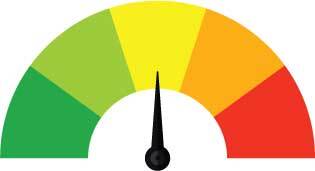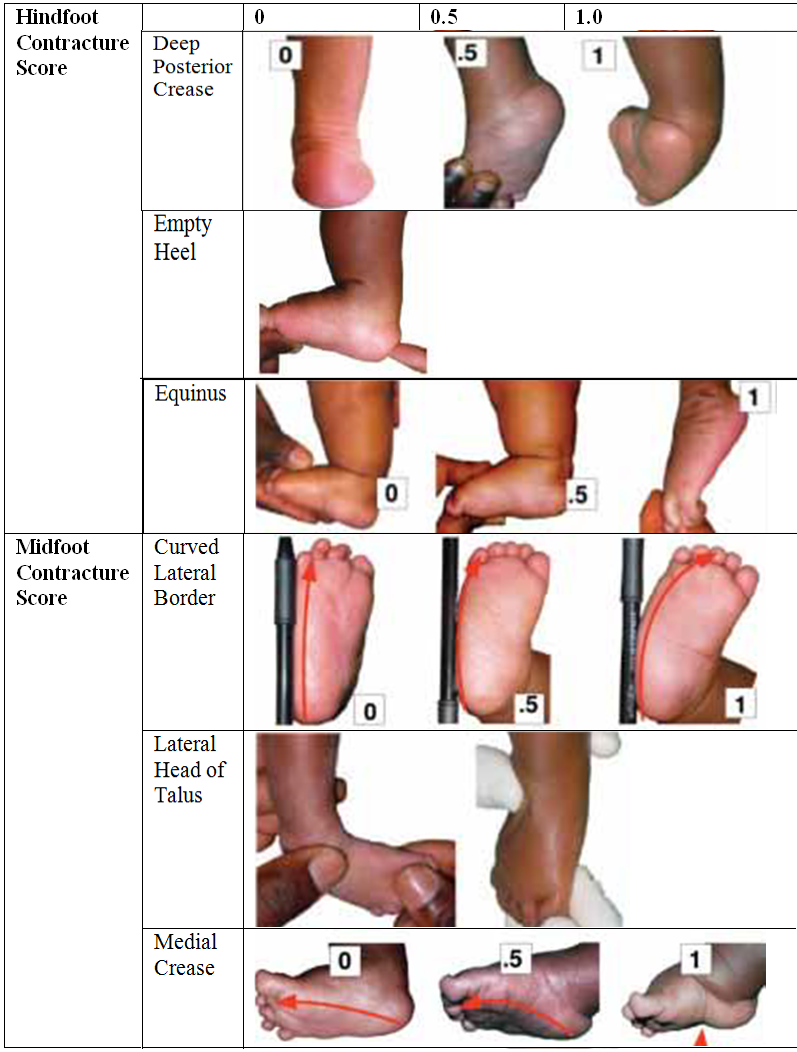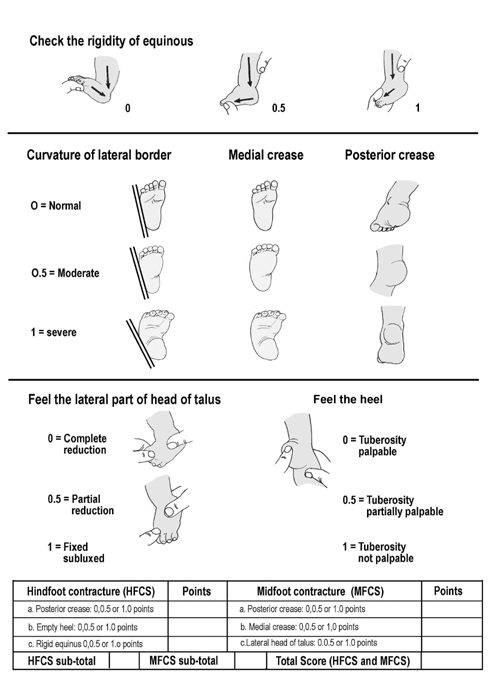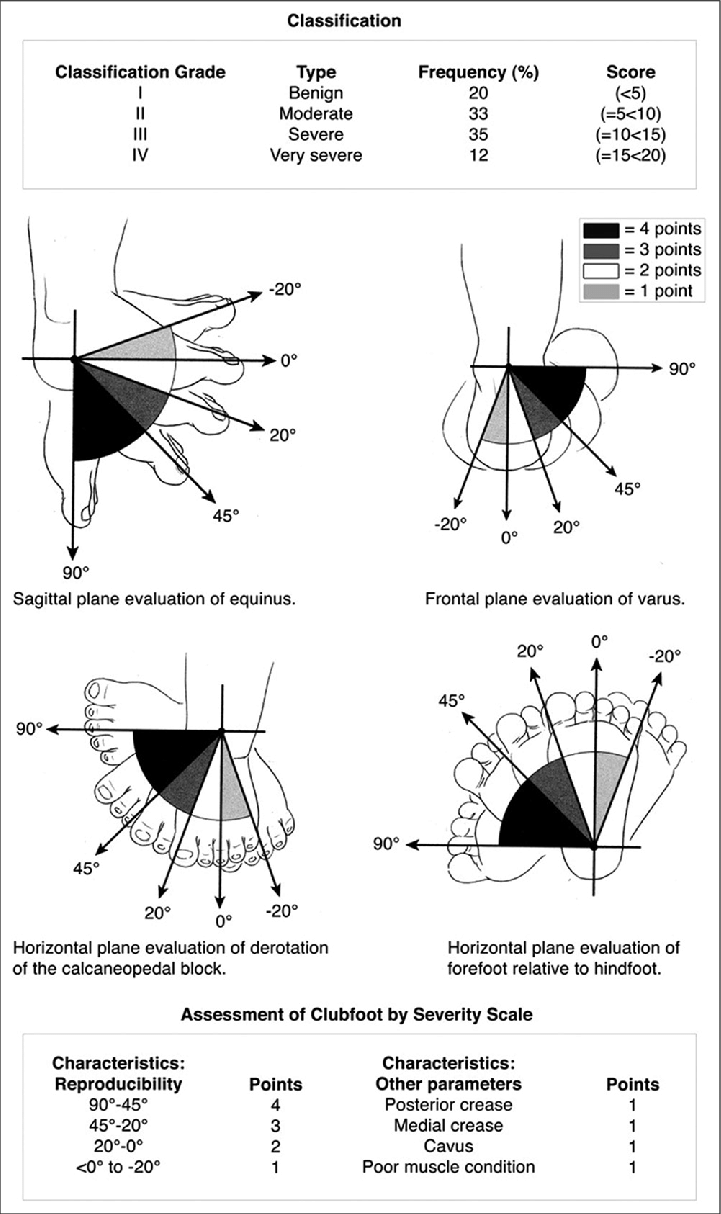There are two clubfoot scoring and classification systems currently in use for initial and post correction severity scoring and classifications, the Pirani Score and the Dimeglio Score.
The Dimeglio scoring and classification system looks at 20 different grades and parameters, while the Pirani scoring system assesses severity by looking at 6 signs as criteria (3 hindfoot signs & 3 midfoot signs).
Most providers use the Pirani scoring system, although some use both.
Does my baby's severity score matter?
Clubfoot scoring and severity really only has relevance as to how many Ponseti casts a child will need, and also has some bearing on the potential for relapse. More severe feet are only slightly more difficult to correct than less severe feet, and any qualified Ponseti Method provider will still only need to apply 5-7 weekly casts for most feet, even very stiff feet. Some feet may need a couple additional casts, with 9 casts total being the most any foot will require (yes, even the most severe and stiff feet). The average number of casts for a skilled Ponseti Method provider is 5.3, while the most is 7.
Try not to put too much stock in your child's severity or the score that your doctor tells you. Most clubfeet will score high initially, and then when corrected should score 0 or as close to 0 as possible. Even the most severe and stiff feet can be corrected easily by a skilled Ponseti provider in 5-7 weekly casts.
Pirani Scoring System.
Dr. Shafique Pirani developed a 6 sign scoring system that is simple and easy for most clinical caregivers to use to asses the severity of the clubfoot. This scoring system applies both at birth and throughout the patient's life. A fully corrected clubfoot scores a 0, or as close to 0 as possible in this scoring system. It is used both before and during casting, and also can be used to evaluate a relapse.
The Pirani scoring system has been the system of choice for many years and is the most commonly used due to it's simplicity.
You may be able to corespond with Dr. Pirani at the link below. Dr. Pirani has retired from seeing patients in Vancouver, British Columbia, Canada. Dr. Pirani frequently speaks all over the globe, and one of the earliest adopters of the Ponseti Method, long before most other surgeons ever gave the Method any attention, much less practice.
Dr. Shafique Pirani at Vancouver Coast Health Research Institute
In the video below, Dr. Pirani is lecturing doctors in India and this section describes the Pirani Scoring System nicely, with graphics.
https://www.youtube.com/live/xfVEdyLUYkI?si=Sseic157aWQH_Ocj
The following text is taken from the "Clinical Assessment" section at Congenital-Talipes-Equinovarus-(CTEV) - Postgraduate OthopaedicsPirani scoring:
- This is a clinical grading system of the severity of deformity.
- It does not take into account the functional state, radiological status or the gait.
- The score has been widely validated.
- It can be used to monitor the progress of treatment and is also predictive of the number of casts required.
- The assessment is divided into midfoot (3parts) and hindfoot (3 parts). Each parameter can have a score of 0, 0.5 or 1. The more severe the foot the higher the score.
- The foot and ankle should be placed in maximal correction for assessment. A sequence of look, feel, move helps to commit the steps to memory:
Hindfoot score: 0-3
Look: posterior heel crease:
Multiple fine creases: 0
One or two deep creases: 0.5
Deep creases change the contour of the arch : 1
Feel: empty heel sign:
Calcaneal tuberosity easily palpable : 0
Calcaneal tuberosity difficult to palpate : 0.5
Calcneal tuberosity not palpable: 1
Move: equinus:
Full ankle dorsiflexion : 0
Ankle in plantigrade: 0.5
Ankle in equinus: 1
Midfoot score: 0-3
Look: curvature of lateral border: ( place a pencil against the lateral border)
Straight border: 0
Mild, distal curved border: 0.5
Lateral border curves at CCJ: 1
Feel: talar head:
Talo-navicular completely reduced, talar head not felt : 0
Talo-navicular joint partially reduced, talar head difficult to feel: 0.5
Talo-navicular joint unreduced, talar head easily felt: 1
Move: medial crease: (assessed after moving the foot to corrected position)
Multiple fine creases: 0
One or two deep creases: 0.5
Deep creases change the contour of the arch: 1
- Dimeglio has proposed a 20 point classification system. Both of the scoring systems have good inter-rater reliability but none predict long term outcome.
- Most of those who treat clubfoot feel that the Pirani scoring method is simpler to use and favor it over the Dimeglio scoring method.
Dimeglio Scoring System.
Dimeglio scoring is a 20 point system that takes into account 16 positions of range of degrees, and 4 visual criteria to total 20 points. It is more work for the clinician to work with than the Pirani system, and has no reported advantages over the Pirani System. However for full informative purposes, we show the basics of this 20 point system. If you want to further inquire about the Dimeglio scoring system, please contact a physician who can assess your child with it.
"The Dimeglio scoring system includes the visual estimation of the equinus, hind foot varus, midfoot rotation and forefoot adduction without forcing the foot, and each feature is given 0 to 4 points according to reducibility..."




